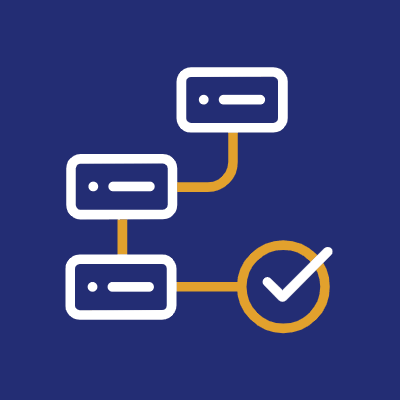
Having a clearly outlined strategy sets up an architecture to focus your efforts and designing beyond basic plan of action recruiting and towards establishing a competitive advantage in recruiting. The strategy focuses the actions of a recruiting department, telling everybody what to focus on and what's unimportant. It further drives whom you hire as recruiters and how you allot your budget and your time.
OUR HIRING STRATEGY
How does AimTek guide businesses?

The first part of recruiting strategy is to determine "why" you're hiring outside people. First, you want to determine your firm's business goals, then what recruiting will do to contribute to each of them. Some of the more common business reasons for hiring include replacement for turnover, current or future business expansion, upsizing the caliber of talent as a result of top talent becoming available, limiting the talent available within the market in order to harm a competitor's ability to staff adequately, learning from different firms, increasing the potential of your firm by adding new skill sets. Which of these focus areas you choose is vital because each requires that you direct your recruiting efforts in a completely different way. For example, if you're hiring for geographic expansion, you'll need to implement a strategy that enables you to enter new geographic regions -- as opposed to hiring to hurt, where you need to concentrate on hiring away key talent directly from competitors.

Primary Goals

No recruiting function has enough resources to fill each position right away with the highest quality hires. As a result, your recruiting strategy must embrace a prioritization element. Priorities can be assigned in ways in which hiring all jobs equally with the same priority, target key strategic business units, focus on key jobs, focus on key or powerful managers.

Prioritizing Jobs

Recruiting high performers requires a higher, more unique strategy and set of tools than recruiting average performers. As a result, you want to first determine what level of performance you're primarily targeting before you identify the other components of your recruiting strategy. Performance targets include "Butts in chairs", aka hire the most cost effective candidates with adequate skills in all jobs, average performers in all jobs, top performers in all jobs, top performers just in key jobs.

Performance
Level
Developing Your Strategy

Some employment strategies need you to take the long approach and develop your own talent, while other approaches target bringing in experienced talent for immediate help or to usher in new skills, experience target ranges include inexperienced talent which will be trained, temporary and contract labor that can be converted, hire at the bottom and promote within, undergrad college hires (interns, internet and on-campus hires), postgraduate hires, experienced hires.

Experience
Level

Whether you target active or passive candidates has a tremendous impact on both the quality of hire and the difficulty of getting an acceptance. You only want to go for what we call “Active Candidates”, they are the easiest candidates to recruit. There are 4 types of candidates we consider Active. First would be Currently Employed, but frustrated in their current job. Second type to look for is Passive candidates. These are individuals who are currently employed and not actively seeking employment. They represent over 80% of potential candidates, but they are the hardest to attract. Focus on currently employed average, above average, and top performers. The third type of candidate to look out for is Diverse candidates. Candidates defined as diverse using EEOC standards. As well as diverse "thinkers” using a global standard. The final type of Active Candidate is Magnet Hires. You want to target magnet hires who are well-known individuals. Those who, because of their notoriety, by themselves help to attract others. Due to the nature of magnet hires they can be both from within and outside the industry.

When to Begin Searching

Your career. Your call. we believe talent should be in the driver’s seat of their careers, equipped with the tools, skills, and autonomy to make the careers they want. At the same time, they shouldn’t have to go it alone when it involves job searching and career decisions—they deserve a partner to educate them along the way.

